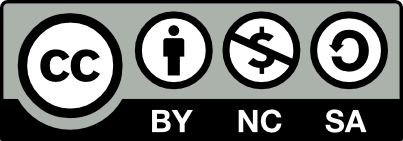Introduction
While adapting the six levels identified in the learning path ‘Anatomy of mis- and disinformation’ to the high school classroom (see: blog post thirteen), I decided that following six times the same structure would be too repetitive for students. As a result, I merged levels three and four and levels five and six.
Cialdini
When reformulating the now four levels, that I dubbed perspectives, I started to see a link between the suggested methods of countering beliefs on these levels and Cialdini’s principles of persuasion.
The suggested method of countering beliefs within perspective one, on the level of information incidents, (hard-to-refute facts presented by scientists and journalists) seems to correspond with the principle of ‘authority’.
The suggested method within perspective two, on the level of information campaigns, (no one thinks like us and even people who are similar to us hold different beliefs) seems to correspond with ‘social proof’.
The suggested method within perspective three, the social-driven aspect, (only think logically and rationally rather than intuitively) seems to correspond with ‘consistency’.
While the suggested method within perspective four, the social level, (show liking and respect) seems to correspond with ‘liking’.
When considering the original six levels instead of the simplified four perspectives the one-on-one correspondence stops. Although there are six levels and six principles of persuasion, they do not match perfectly: it would be an overstretch to fit ‘scarcity’ and ‘reciprocity’ to the levels.
The principles that seem to fit the two remaining levels without correspondence with Cialdini's principles – three regarding our approach to reality and five regarding our autonomy – seem to be ‘logic’ for level three and ‘resilience’ for level five.
Reflection
I started thinking about the consequences of the correspondence with Cialdini’s principles that nevertheless seem to be there for four of the six levels.
Suppose the suggested force to effectively counter statements indeed relies on authority. In recent years, the authority of traditional centers of authority such as scientists or journalists has been severely diminished in the eyes of many. Instead, authority seems to be attributed by many to different institutions and individuals, from religious and ideological groups to mavericks. It seems that for them, these groups and individuals currently have the authority to anoint statements as ‘facts’. Therefore, we find ourselves in a reality in which 'alternative facts' are a thing.
And, if social proof indeed is the driver on the level of social campaigns, and the internet has enabled us to easily find people like us, then social proof has profoundly decentralised over the last decades. The times of Edward Bernay’s ideal of hidden elites steering the tastes and opinions of the masses for their own good have passed us by if they ever were existent. Social proof seems to have become fragmented and therefore harder to steer.
On the level of thinking about thinking, the driving force seems to be consistency. But, as Robert Kurzban writes, “we need only be as consistent as others notice and hold us accountable for.” In our times of social media, this means we curate a consistent mask by means of our online presence, and this mask has become a prison. Any inconsistent remark or post will be used against us, while any inconvenient remark or post, whether current or from a dark past, is extrapolated to represent a hidden consistency and thus exposes us to condemnation. Our masks have become weaponised by us as senders and by our recipients and have put a public limit to our thinking about our thinking. Changing our thinking about our thinking has become a dangerous public event.
And then there is the driving force of ‘liking’ that is seemingly linked to the level of (de-)radicalisation. Our liberal democracies seem to lack inherent mechanisms to support ‘liking’. They are all about autonomy, agency, and providing mechanisms for decision-making and keeping power in check - although the last element seems to have become more problematic. The closest to liking that some liberal democracies provide seems to be social rights as a safety net. But, these safety nets come with a given hierarchy: the beneficiaries of the safety net are perceived as (temporary) losers.
As a result, liking in liberal democracies essentially seems to be outside of the realm of government. Liking seems to have become an outcome of entertainment. I've often wondered whether our dissolving relations with family and friends are compensated by adopting TV and Internet stars as surrogates, just as prisoners choose surrogate family members when locked away. The stars of providing alternative liking in the field of dealing with disinformation are NGOs (such as Fryhuset and Utgång).
Roles of governmental organisations
In a situation in which authority and social proof have deeply decentralised, in which our consistency has become a public thing and liking is not within the governmental sphere, only a few avenues of influence seem open for governmental organisations. While they may nevertheless try to recentralise authority and social proof by supporting media and academics and by censoring and nudging for instance, it is doubtful whether that will bend the trends. They may try to regulate social media, embrace being entertaining, and support preferred NGOs as suppliers of liking but they are up against a rigged demand side and a rigged supply side.
What seems to be open to governmental organisations are the drivers seemingly linked to level three – ’rationality’ – and level five – ’autonomy’. Level three can be serviced by the educational system. Hence the flurry of government-sponsored media education and citizenship initiatives. Level five touches on one of the core elements of liberal democracies and opens up the way for initiatives that empower ’resilience’.
Still, even these levels should not be left to governmental organisations alone, in line with the democratic concept of keeping power in check. Enter project SAUFEX.

